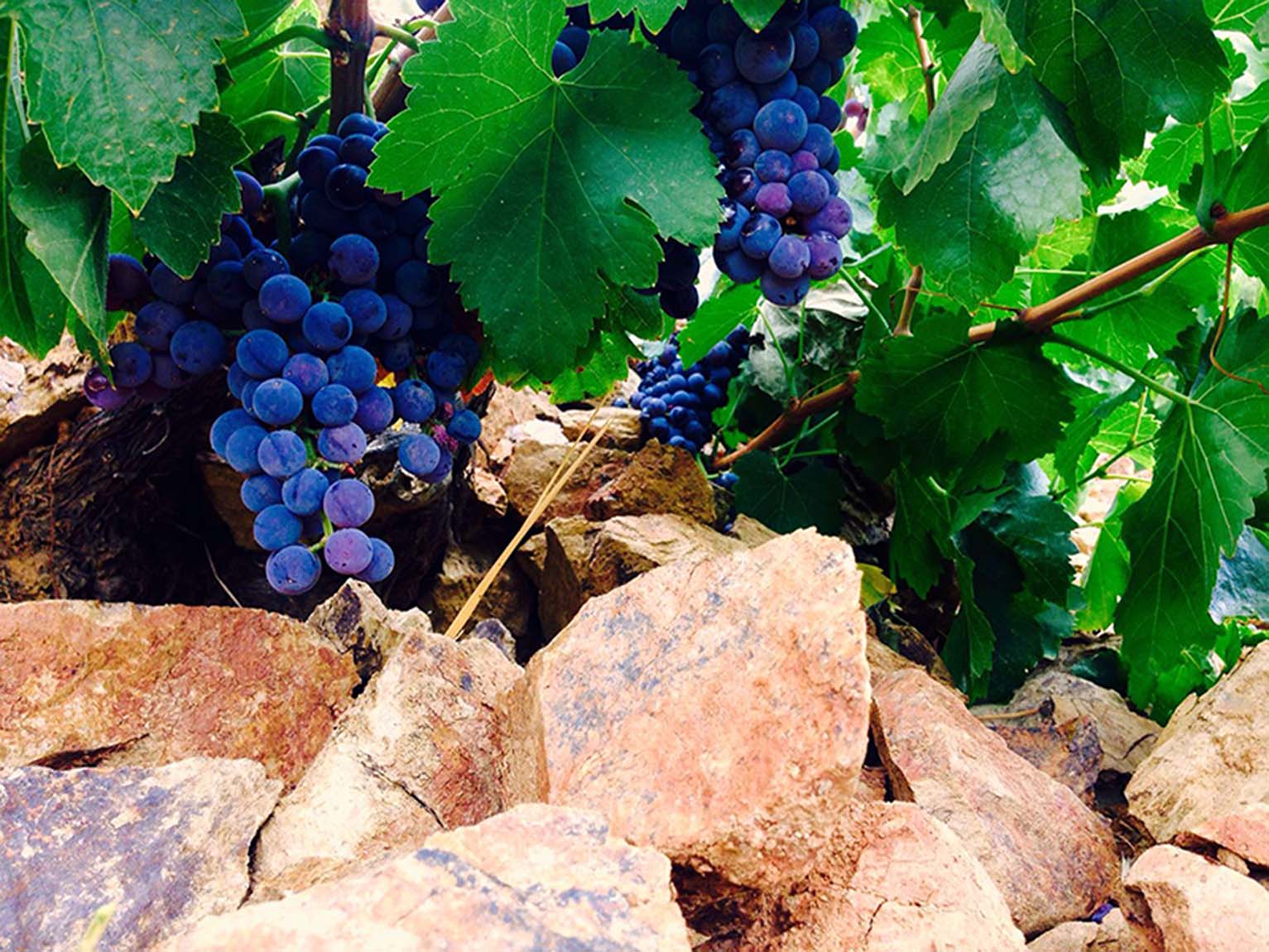Granite is an igneous (volcanic) rock with a grainy composition, formed by the slow cooling and crystallization of magma below the surface of the earth. The large grains, which are clearly visible, make it look quite pretty, hence its use in construction. The composition can vary, but usually includes feldspar, quartz and mica, and it can be pink, grey or red in colour.
Granite, in its various stages of decomposition, is an interesting vineyard soil. In its native state, as a hard rock, nothing could grow on it. But with time, it begins to break down, particularly where there is some biological activity as well as weathering from the elements.

Where to find granite
Gamay seems to thrive on granite. One of the most famous regions for granitic vineyard soils is Beaujolais. Although the actual geology of the area is a little more complicated, most of the crus have other soil types in the mix, and in the south of the region clay and limestone make an appearance.
Another place with granitic soil is the Dão Valley in Portugal, situated inland between the Douro and Lisbon. Here, the rock has decomposed to a coarse-grained sand, which results in distinctive reds and whites with lovely floral qualities. It’s interesting to compare Touriga Nacional grown here with the same variety grown in the Douro, on schist. The climates may be different, but I reckon the soil type makes itself felt quite clearly.
The hill of Hermitage in the northern Rhône is another great example of a granite-based terroir – although there is some variation across this small appellation.
Northern Portugal and Galicia in north-west Spain have granite as the dominant soil type. Albariño flourishes on the free draining granite of Atlantic facing DO Rías Baixas. Sal da Terra, a wine made with Eulogio Pomares of Bodegas Zarate, in conjunction with me, Ben Henshaw and Daniel Primack, comes from two slightly different types of granitic soil. The first vineyard is Francón in Castrelo, close to the Ría de Arousa. Here old vines are trained in emparrado (the local name for a high pergola training system) and grown on granitic soils with some red clay, which helps retain water and give nice even ripening. The second is Carballoso in Xil, where the soils are sandy granite.
"It is a kind of granite that we call Xabre", says Pomares. "The rock is weathered and is a yellow colour because you also find iron in the rock". It's a poor soil, giving concentrated grapes with low yields.
The influence of granite
I find that granite soils tend to give wines a brightness and a fruit focus. The fruit characters can be very fresh and primary, and for red wines it brings out the floral qualities.
Photo credit: Joe Woodhouse, Daniel Landi and Fernando García from Comando G

